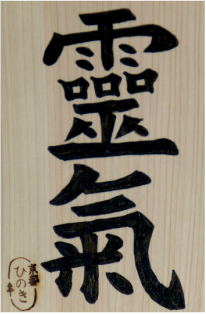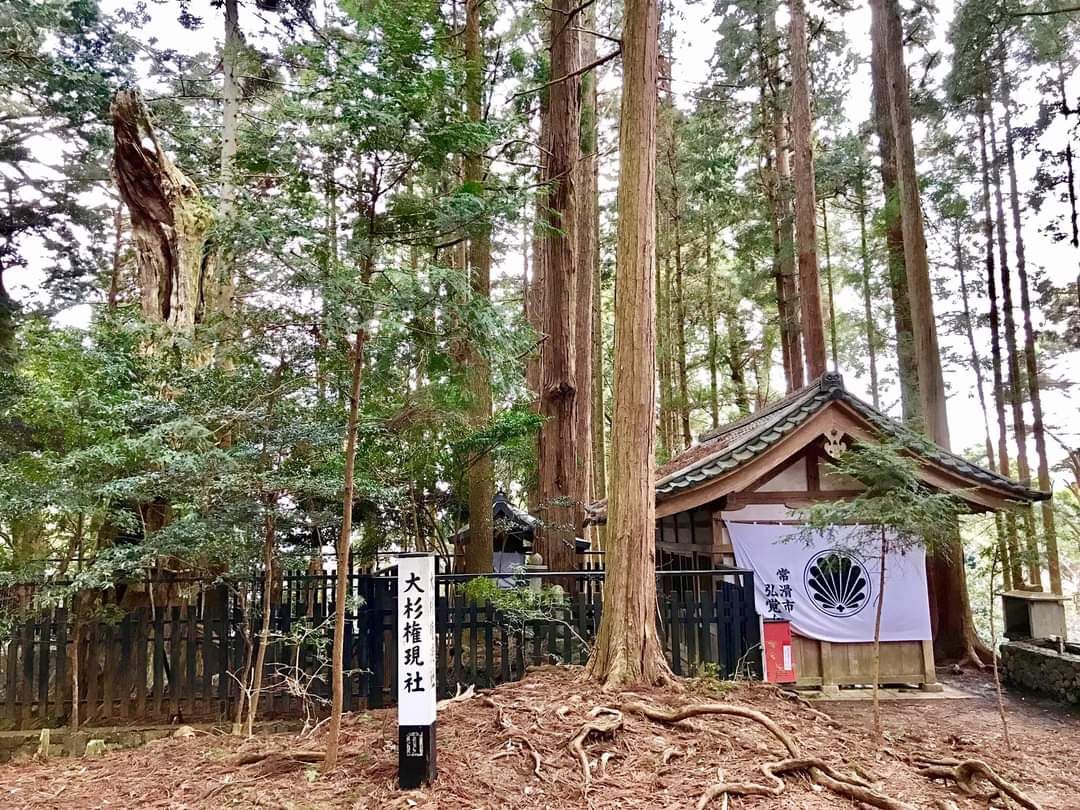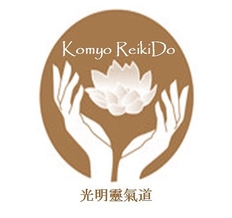What is Reiki?
|
Kanji for Reiki
|
Reiki is a Japanese term.
'Rei' means something mysterious, ethereal, transcendetal & sacred. 'Ki' means atmosphere or something subtle or energy (of the universe). The Japanese word of Reiki, can be defined as an ethereal, transcendental and sacred energy of the universe which sustains all life. Reiki Ryoho (Reiki Healing Art) is a hands-on healing by means of channeling the energy of the universe, that is, of heaven and the earth. It is a two-fold practice, a healing practice and a spiritual practice. While Reiki Ryoho in many traditions concentrate on the physical aspect of healing, Komyo ReikiDo concentrates more on the spiritual or development of the mind to create a complete healing practice for all aspects of the human condition. |
Origins of Reiki
|
Osugi Gongen Shrine near the top of Mt Kurama. It is believed that Usui Sensei meditated and attained Satori very close by. The exact location will never be known.
Photo by courtesy of Viktoria Romanova, Komyo ReikiDo Ukraine, 2017. The site of where Osugi Gongen Shrine once stood. A typhoon destroyed the the shrine in 2018 and has not been rebuilt.
Photo by courtesy of Sally Wain, Komyo ReikiDo Melbourne, April 2023. |
The founder of Reiki Ryoho was Mikao Usui (1865 - 1926), pictured left. Usui Mikao was born 15th August 1865 in Taniai, Gifu Prefecture, Japan. Usui Sensei was born at the end of the Edo Period, the age of Feudalism, a critical time in Japanese history. Japan was ruled by the Shogunate who commanded the armies of Samurai warriors. In 1867, political dominion and rule was returned to the Emperor of Japan. This historical event was where Feudalism ended and Modernism began. Usui Mikao was the son and grandson of a merchant family whose ancestry can be traced back to the Chiba Samurai clan. Details of his childhood are not known and cannot be verified. In the small village of Taniai, there is a Jodo Shu (Pure Land) Buddhist temple where the generation after generation of the Usui family’s remains are located. In the same village, there is a Shinto Shrine with a huge stone Torii (gate) where Usui Mikao and his younger brother’s names, Sanya and Kuniji, are engraved. Usui Sanya was a medical doctor in the army and after retirement, opened a clinic in Tokyo. Usui Kuniji was a Police Officer in the local area where Usui Mikao was born. Kuniji retired and became a Shihan of the Gakkai and was teaching Reiki Ryoho to local people. In 1922, Usui Mikao climbed Mt. Kurama, north of Kyoto, the ancient capital city of Japan. At the time, he was almost 57 years old, an elderly man where the average lifespan was 50 in Japan. Here, he undertook severe training by fasting and meditating for 21 days. He felt one Great Reiki and became enlightened, believed to be in March 1922. The exact date is not known. Usui Sensei accidently realised that he was given a wonderful gift, a mysterious healing ability in his hands. Why Usui Sensei climbed the mountain and why he undertook the severe training for 21 days is unknown and unable to be verified. Usui Sensei wanted to share this wonderful gift with as many people as possible instead of keeping it to himself and his family as was Japanese tradition. So he returned to Tokyo where he was based. He settled in Harajuku, Aoyama, Tokyo in April 1922 and established the Usui Reiki Ryoho Gakkai (Association). The URR Gakkai still exists in Tokyo today. The URR Gakkai was supported by the Japanese Imperial Navy, the 2nd president of the Gakkai was Ushida Juzaburo, rear admiral of the Navy, the 3rd president was Taketomi Kanichi, rear admiral, 5th president, Wanami Hoichi, vice admiral, and Hayashi Chujiro, captain. The reason why the Usui Reiki Ryoho Gakkai was supported by the Japanese Imperial Navy is unknown. It is speculated that Reiki Ryoho was seen as useful, convenient, and beneficial on board the naval ships. In the Great Earthquake of 1923, Usui Sensei offered his Reiki Ryoho to those in need. His fame grew from his healing activities during this natural disaster. Usui Sensei was only one of many Reijutsu Ka (healing practitioners) in Japan at that time. It is said that there were 30,000 Reijutsu Ka but as the founders died so too the many systems they formed. The only exception was Usui Reiki Ryoho. Due to his fame, Usui Sensei travelled to teach his Reiki Ryoho. While travelling, he passed away from a cerebral haemorrhage on 9th March 1926. In 4 years, he became famous in Japan. The rest of the world had to wait for Hayashi Sensei and Takata Sensei to make Reiki Ryoho widespread in the world. A year after Usui Sensei’s death, the Usui Reiki Ryoho Gakkai erected a memorial stone next to the Usui family gravesite in Saihoji Temple of the Jodo Shu (Pure Land) Buddhist sect in Tokyo. On the memorial stone, it describes Usui Sensei and his life. While there are many facets of Usui Sensei’s life engraved on this memorial, many are not detailed enough to be certain of his specific training and much is not verifiable. This is the source of legend of Usui Mikao. Usui sensei taught 20 Shihans (teachers), one of which was Chujiro Hayashi. |
Komyo Reiki Lineage
Usui Mikao, founder (1865 - 1926)
Hayashi, Chujiro ( 1879 - 1940)
Yamaguchi, Chiyoko (1921 - 2003)
Inamoto, Hyakuten, founder of Komyo ReikiDo (1940 - )
In Japan, the surname precedes the first name as the family is more important than the individual.
Hayashi, Chujiro ( 1879 - 1940)
Yamaguchi, Chiyoko (1921 - 2003)
Inamoto, Hyakuten, founder of Komyo ReikiDo (1940 - )
In Japan, the surname precedes the first name as the family is more important than the individual.




